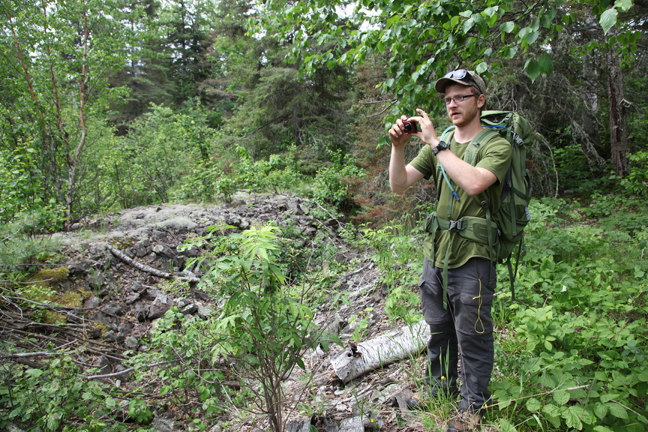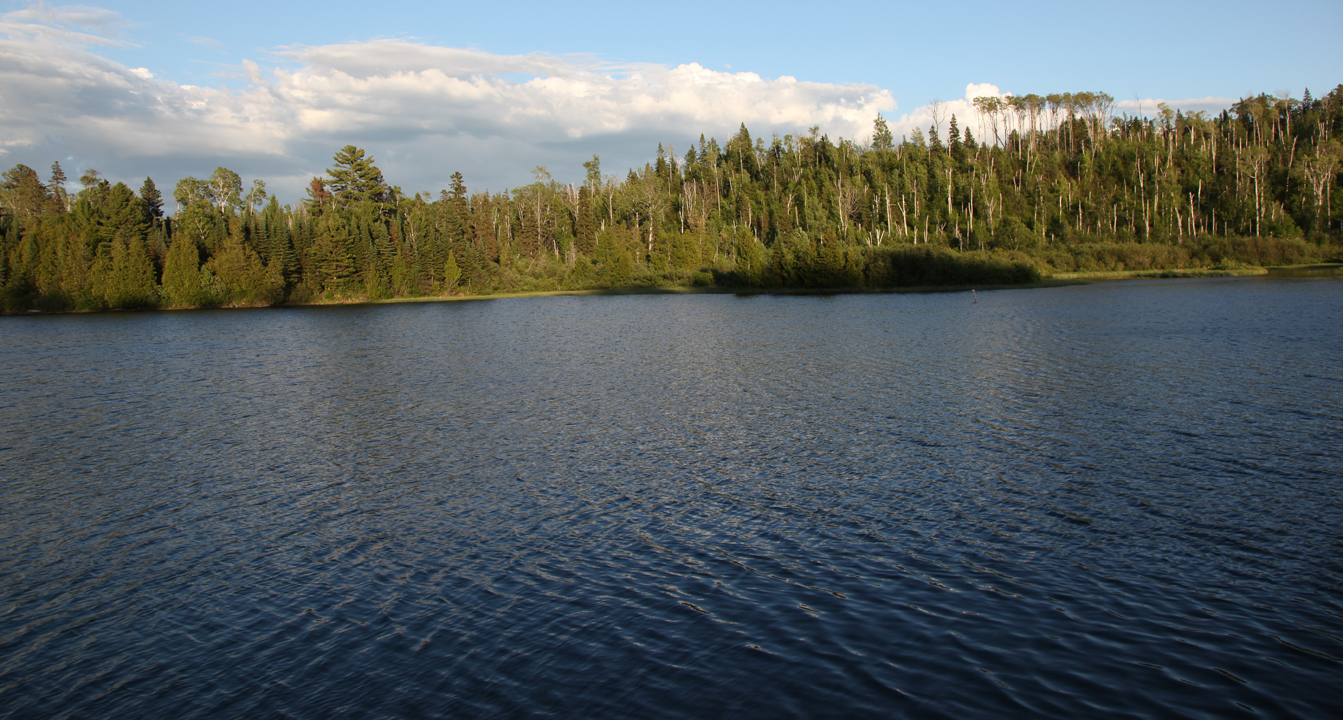 |
||||||||||||||
|
|
||||||||||||||
|
Early Mining & Metal Working on Michigan's Upper Peninsula
|
|
Early Copper Mining and Metal Work on Isle Royal and Michigan's Upper Peninsula - Collaborators include David Pompeani, Dan Bain, Seth DePasqual, Matt Finkenbinder, Byron Steinman among others Copper use in the western Great Lakes region spans at least the last 7,000 years and may represent the earliest known metallurgy in the Americas. Raw copper was formed into utilitarian and cultural objects through multiple annealing and hammering processes. When copper is heated above 700°C trace metals volatize and are carried upward in plumes of hot air and distributed across the landscape. Early surveys of prehistoric mining localities found piles of mining debris alongside worked outcrops of native copper. Mine tailing debris could serve as an enhanced source of trace metals in the local watershed. Past studies have found that small lakes are sensitive to trace metal pollution related to mining and metal working activities. Our goal is to reconstruct anthropogenic pollution during the Holocene using radiometrically dated (14C, 210Pb, 137Cs) lake sediment records from the Keweenaw Peninsula. These records will be used to construct a time-series of trace metal (As, Ag, Hg, Cu, Zn, Co, Cr, etc.) concentrations following methods outlined by Abbott and Wolfe (2003). Our work on Isle Royal and Michigan's Upper Peninsula is aimed at characterizing small, isolated watersheds on topographic highs, with known prehistoric and historic metal working activity in close proximity (0.5-2 km), making them highly sensitive to trace metal flux related to local runoff and atmospheric exchange. This study has produced more accurate time constraints for cultural horizon shifts during the prehistoric copper cultures and quantitatively estimate the environmental impact of historic metal working activity in the 19th and 20th centuries.
Resulting publications include Lake Sediments Record Prehistoric Lead Pollution Related to Early Copper Production in North America. The mining and use of copper by prehistoric people on Michigan's Keweenaw Peninsula is one of the oldest examples of metalworking. We analyzed the concentration of lead, titanium, magnesium, iron, and organic matter in sediment cores recovered from three lakes located near mine pits to investigate the timing, location, and magnitude of ancient copper mining pollution. Lead concentrations were normalized to lithogenic metals and organic matter to account for processes that can influence natural (or background) lead delivery. Nearly simultaneous lead enrichments occurred at Lake Manganese and Copper Falls Lake _8000 and 7000 years before present (yr BP), indicating that copper extraction occurred concurrently in at least two locations on the peninsula. The poor temporal coherence among the lead enrichments from _6300 to 5000 yr BP at each lake suggests that the focus of copper mining and annealing shifted through time. In sediment younger than _5000 yr BP, lead concentrations remain at background levels at all three lakes, excluding historic lead increases starting _150 yr BP. Our work demonstrates that lead emissions associated with both the historic and Old Copper Complex tradition are detectable and can be used to determine the temporal and geographic pattern of metal pollution.
Copper Mining on Isle Royale 6500-5400 Years Ago Identified Using Sediment Geochemistry from McCargoe Cove, Lake Superior. Isle Royale, in Lake Superior, contains evidence of indigenous copper mining; however, the timing and geographical extent of mining activity is poorly known. We analyzed metal, carbon, nitrogen, and organic matter concentrations to document past mining pollution in sediment cores recovered from McCargoe Cove; a long, narrow inlet of Lake Superior on Isle Royale that receives drainage from a watershed that contains numerous ancient copper mines. At McCargoe Cove, concentrations of lead, copper, and potassium increase in the sediments after ad 1860 and between 6500 and 5400 years before 1950 AD (yr BP). Metal pollution increases at McCargoe Cove exceed natural (or background) levels and coincide with radiocarbon dates associated with copper artifacts and existing lead pollution reconstructions from lakes on the Keweenaw Peninsula. Interestingly, a coherent cessation of lead emissions at multiple study sites after ~5400 yr BP coincides with the onset of dry conditions found in regional paleoclimate proxy records. After ~5000 yr BP, lead concentrations on both Isle Royale and the Keweenaw Peninsula remain at background levels until the onset of modern lead pollution ~ 1860 AD.
|
|




